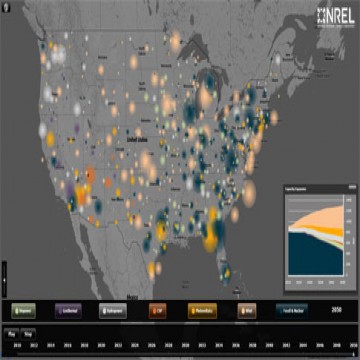Renewable Electricity Futures Study
The National Renewable Energy Laboratory's (NREL) Renewable Electricity Futures Study (RE Futures) is an initial investigation of the extent to which renewable energy supply can meet the electricity demands of the continental United States over the next several decades. This study explores the implications and challenges of very high renewable electricity generation levels—from 30% up to 90%, focusing on 80%, of all U.S. electricity generation—in 2050. At such high levels of renewable electricity generation, the unique characteristics of some renewable resources, specifically geographical distribution and variability and uncertainty in output, pose challenges to the operability of the nation's electric system.
Key Findings
Renewable electricity generation from technologies that are commercially available today, in combination with a more flexible electric system, is more than adequate to supply 80% of total U.S. electricity generation in 2050 while meeting electricity demand on an hourly basis in every region of the country.
Increased electric system flexibility, needed to enable electricity supply and demand balance with high levels of renewable generation, can come from a portfolio of supply- and demand-side options, including flexible conventional generation, grid storage, new transmission, more responsive loads, and changes in power system operations.
The abundance and diversity of U.S. renewable energy resources can support multiple combinations of renewable technologies that result in deep reductions in electric sector greenhouse gas emissions and water use.
The direct incremental cost associated with high renewable generation is comparable to published cost estimates of other clean energy scenarios. Improvement in the cost and performance of renewable technologies is the most impactful lever for reducing this incremental cost.

